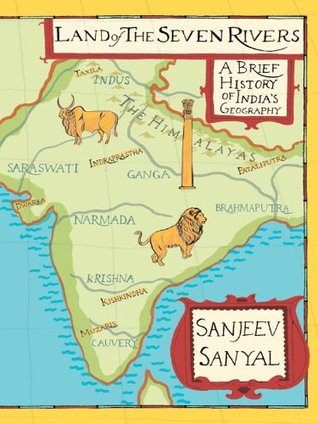More on this book
Community
Kindle Notes & Highlights
Take for instance the dogged resistance to the Turks by the Rajput-ruled kingdom of Mewar in southern Rajasthan. The rulers of Mewar did not see themselves merely as kings but explicitly as the custodians of Hindu civilization embodied in the temple of Eklingji, a manifestation of Shiva. The deity was considered the real king of Mewar and this is why its rulers did not use the title of Maharaja (which means Great King) but that of Rana
Babur’s diary expresses his disdain for the people of India in barely a couple of paragraphs but he was more impressed by the flora and fauna of the country and spent several pages describing them. Babur tells us about peacocks, elephants and river dolphins. He was particularly intrigued by the rhinoceros that he encountered in forests near Peshawar. It is interesting that rhinos were found so far to the west in the sixteenth century.
One of my favourite tales is about how the Marathas captured Sinhagadh by using a trained monitor lizard named Yeshwanti to scale the walls. The guerrillas tied a rope around the lizard, which climbed up a rock-face that was so steep that it had been left unguarded. A boy then climbed up the rope and secured it for the rest. The fort of Sinhagad is just outside Pune and can be easily visited.
On the highway between Orchha and Khajuraho, there is a small but picturesque palace built on a lake by Chhatrasaal for Mastani during her younger days. Not many people know about it and visitors are likely to have it all to themselves. The surrounding hills are heavily fortified, a reminder of the turbulent times in which Mastani lived.
Lambton worked on the survey till he died of tuberculosis, in the field, in 1823. His crumbling grave was recently rediscovered by the writer John Keay in the village of Hinganghat, fifty miles south of Nagpur. His theodolite is in better condition and is now housed in the Survey of India headquarters in Dehradun.
Fortunately, he was succeeded by the equally dedicated George Everest. By the time Everest retired and returned to England in 1843, the Great Arc had been extended well into the Himalayas. He built a bungalow for himself at Hathipaon, near the hill-station of Mussourie. Its ruins still stand on a ridge commanding magnificent views of snow-capped peaks
Now came the issue of naming Peak XV. The Tibetans already called it Chomolungma (Mother Goddess of the World). Unusually for the colonial period, the Survey of India tended to retain the local names where possible but in this case the temptation proved too great. It was named after George Everest. Like many people today, I used to wonder why the British would name the highest mountain in the world after the Surveyor General of India


